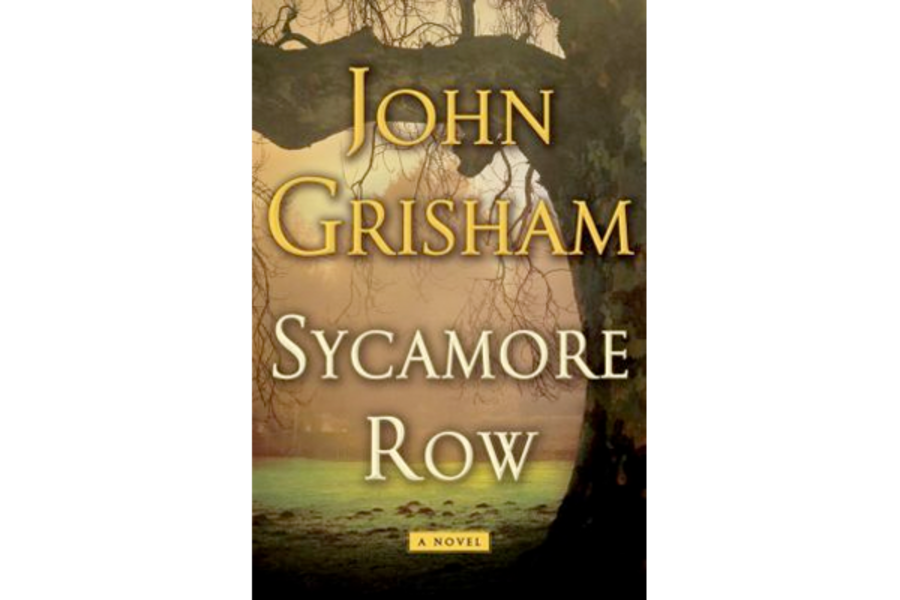Sycamore Row
Loading...
Leave it to John Grisham to take the thrill out of the legal thriller yet still weave a satisfying tale of tensions and tangled family trees in the Deep South.
The main character in Sycamore Row, his latest book, has a familiar name and face: He's Jake Brigance, the young attorney in small-town Mississippi who last appeared in Grisham's first novel, the classic "A Time to Kill."
This time around, it's 1988, three years after Brigance won the case of a lifetime in his early 30s. He's wondering if his best days are behind him when an intriguing new client named Seth Hubbard appears without ever gracing the attorney's door.
The wealthy Hubbard has just committed suicide, but not before writing a will leaving most of his extensive estate to his housekeeper and leaving a letter asking Brigance to represent his interests in court. The dead man's pair of ungrateful children will be fighting for their share of the estate and there's going to be one mighty battle.
Race provides another twist, one that gives Brigance "early rumblings of excitement": Hubbard was white, and his beneficiary is black.
That's the gist of the entire story: A lawyer must defend a dead man's wishes in a racially sensitive legal case. Not exactly the stuff of another Grisham cinematic blockbuster starring Matt Damon or Matthew McConaughey, especially since Brigance himself is one of the less interesting people in the book.
A do-gooder white-bread type who's about as lively as a serving of lukewarm grits, the attorney seems unable to get riled up, worn down or beset by doubt. Surely the man thought to be the real Jack Brigance – a green young attorney named John Grisham – had more spark.
Fortunately for the reader, several other more interesting characters pick up the slack in "Sycamore Row" by refusing to always be perfect specimens of generosity rectitude.
There's a nosy waitress with a heart of gold, an annoying secretary and a glitzy but oblivious black attorney – the city-slickiest of city slickers – from a bustling burg called Memphis. Readers of "A Time to Kill" will recognize several faces, including the earnest black sheriff and the boozy but wise attorney Lucien Wilbanks, who "ranted about injustice or history or the problems of the world, but was happily oblivious to the observations of others."
There's something unoriginal about almost all of these literary creations and maybe that's one of the keys to Grisham's legendary story-telling magic. We can sense the comfortably familiar, even when he unfolds the mundane details of day-to-day lives by offering endless information about the weather, clothing, and even bathroom breaks. We're still willing to read all of it, all 400-plus pages worth, because the characters are so vivid.
"Sycamore Row" unfolds at a stately Southern pace with a "Murder She Wrote"-style reticence at deeply exploring violence or sex. They're crucial parts of the story but mostly lurk off-screen like a crazy aunt in the basement; Grisham is even careful about avoiding earthy language.
Then again, in Southern literature, gentility often overlays a foundation of shameful secrets. The setting of "Sycamore Row," the imaginary small town of Clayton, Miss., fits this pattern.
On one hand, it comes across as a idyllic place of down-home coziness where men gather to jaw each morning at the local coffee shop and everybody knows everybody. Well, everybody who's of the same race, at least.
The lines are clear. Some people serve and others are served, and crossing over is a topic for gossip and worse. Grisham drops one stunning tidbit: In 1980, just seven African-American people in the entire state of Mississippi claimed to be worth more than $1 million.
Grisham weaves race into the tapestry of this town and this novel, revealing how it divides, conquers, and leaves deep roots under rolling hills.
The Mississippi legal system has trouble with the whole hodgepodge, no surprise considering that the law's so antiquated that an attorney must worry about "Earwigging the Chancellor." Even the progressive Brigance (and maybe Grisham, too) exposes more than he intends by noting that he hopes a promising young black legal assistant will grow to "help her people."
Ultimately, Grisham's message about race isn't especially profound. But in the South, it seems, simply speaking of the unspoken can represent progress, even a kind of earwigging. But hardly the kind that the Magnolia State's legal forefathers ever foresaw.
Randy Dotinga is a Monitor contributor.








